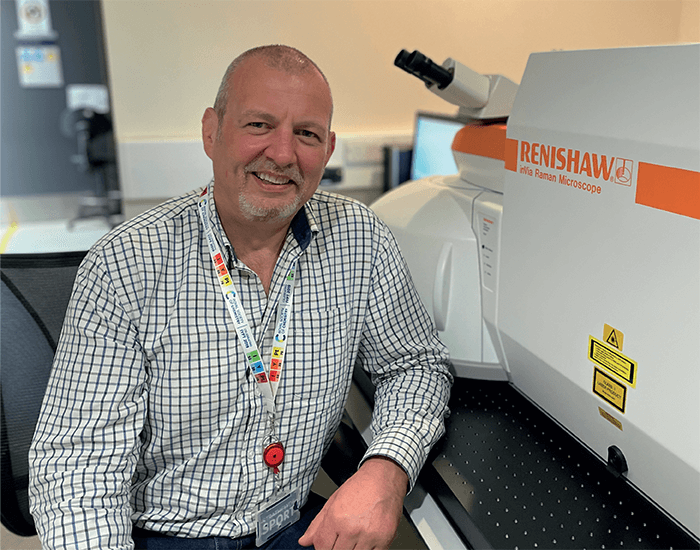Reflections on the past decade…
The surface-enhanced Raman scattering (SERS) field has certainly come a long way since PhD student Jim McQuillan reported an enhanced intensity Raman spectrum in 1973. The field really took off in 1977, when two papers attempted to understand the enhancement in the Raman scattering from the roughened metal surfaces, inspiring thousands of subsequent studies.
In 2012, there were approximately 1,250 papers published in the SERS field. Notably, among the total articles published in 2012, only 1.9 percent and 5.5 percent covered medicinal applications and biochemistry, respectively. Fast forward to 2022 and we find that over 2,350 papers were published. We still see that chemistry dominates, but the materials aspect of SERS has dropped to 19 percent. Interestingly, medicinal applications jumped to 2.3 percent and biochemical use of SERS went up to 9 percent. And so I would say the most significant development in the last 10 years is the realization that SERS is useful for biological, biochemical, and medical applications – linking to an increase in portable Raman spectrometers.
In 2012, there were 50 articles published containing the words “SERS” or “assay,” but, in 2022, there were 108. This increase is driven by the combination of SERS with lateral flow assays. In light of the COVID-19 pandemic, colorimetric lateral flow assays became incredibly important. These assays are simple to convert by adding a Raman reporter and interrogating the lateral flow device with a portable Raman spectrometer. Benchtop Raman spectrometers can also be used to analyze lateral flow strips – although this may not be in the spirit of lateral flow assays, which are designed for point-of-use and rapid response.
I’d also add that there have been significant industrial developments to Raman spectrometers. The high-end microscope systems are highly valuable for research but, in terms of translating this growth of SERS for non-experts, Raman spectrometers need to be made more accessible. Firstly, they need to be within laboratory budget parameters in terms of research; secondly, they must be easy to use with software that doesn’t require interpretation by an expert spectroscopist.
The decade(s) to come…
The SERS field continues to be buoyant and there are a number of ongoing research projects that are extremely interesting. My main concern is that those beyond the spectroscopic community are limited in their awareness of SERS as a technique that can be used when other methods fail to fulfill the required measurement criteria. There are many examples of this in literature, and the concern is whether the end user base is open enough to use SERS to its full potential. We are still without a large-scale SERS application that transforms the end user base.
I am most excited about the integration of AI with SERS data. SERS data has got a reputation for being variable – although this can be controlled and minimized. The integration of AI with data processing will advance the presentation and interpretation of data beyond what is currently possible. Of course, there needs to be caution in terms of overreliance on AI, but steps are being taken by researchers to integrate this capability into the SERS community. Advances in this area would really help with the reliability and presentation of data for non-experts of SERS.
In the future, I hope we will see SERS applied in several new and unique ways – such as non-destructive, real-time analysis of multiple species simultaneously at ultra sensitive concentrations and in a quantitative manner. If this can be achieved, we’ll see greater advances in SERS from the research laboratories into the hands of the end user – ultimately benefiting society. SERS is finally being acknowledged as a promising technique – one that is going to deliver on several meaningful applications. But we need to continue with the strong research base and the integration of researchers working with industry partners to overcome the barriers that are in place for translating research into commercial reality. The pandemic has proved that working collaboratively, rather than competitively, provides results. Collaboration will benefit the whole spectroscopic SERS community – as well those beyond.





